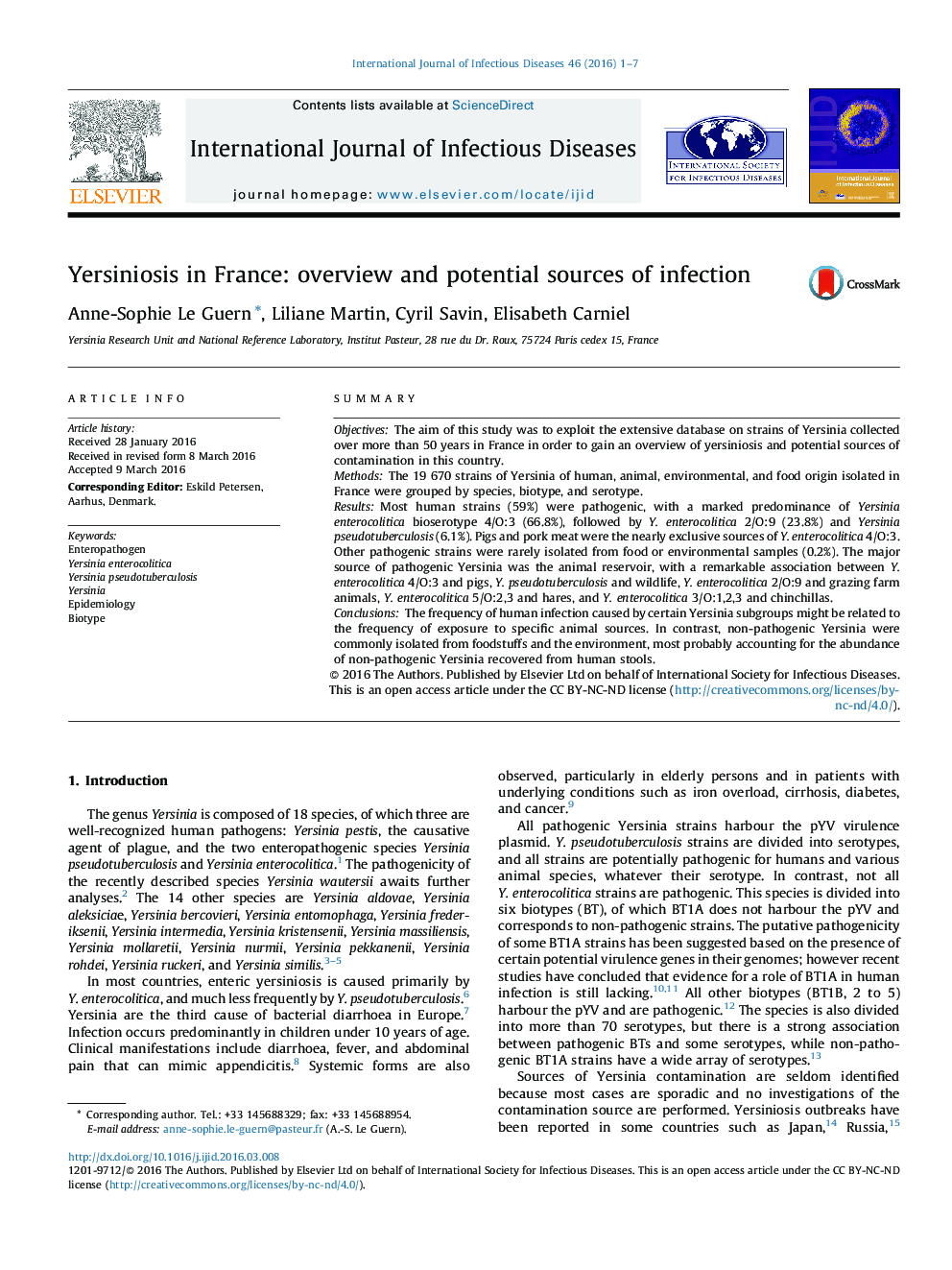| کد مقاله | کد نشریه | سال انتشار | مقاله انگلیسی | نسخه تمام متن |
|---|---|---|---|---|
| 3361646 | 1592048 | 2016 | 7 صفحه PDF | دانلود رایگان |

• Yersinia enterocolitica 4/O:3 is the main cause of human yersiniosis in France.
• Pigs and pork meat are the nearly exclusive source of Y. enterocolitica 4/O:3.
• Yersinia pseudotuberculosis is widespread in wildlife.
• Each Y. enterocolitica subgroup is associated with a particular animal species.
• The environment and foodstuffs are not common sources of human contamination.
SummaryObjectivesThe aim of this study was to exploit the extensive database on strains of Yersinia collected over more than 50 years in France in order to gain an overview of yersiniosis and potential sources of contamination in this country.MethodsThe 19 670 strains of Yersinia of human, animal, environmental, and food origin isolated in France were grouped by species, biotype, and serotype.ResultsMost human strains (59%) were pathogenic, with a marked predominance of Yersinia enterocolitica bioserotype 4/O:3 (66.8%), followed by Y. enterocolitica 2/O:9 (23.8%) and Yersinia pseudotuberculosis (6.1%). Pigs and pork meat were the nearly exclusive sources of Y. enterocolitica 4/O:3. Other pathogenic strains were rarely isolated from food or environmental samples (0.2%). The major source of pathogenic Yersinia was the animal reservoir, with a remarkable association between Y. enterocolitica 4/O:3 and pigs, Y. pseudotuberculosis and wildlife, Y. enterocolitica 2/O:9 and grazing farm animals, Y. enterocolitica 5/O:2,3 and hares, and Y. enterocolitica 3/O:1,2,3 and chinchillas.ConclusionsThe frequency of human infection caused by certain Yersinia subgroups might be related to the frequency of exposure to specific animal sources. In contrast, non-pathogenic Yersinia were commonly isolated from foodstuffs and the environment, most probably accounting for the abundance of non-pathogenic Yersinia recovered from human stools.
Journal: International Journal of Infectious Diseases - Volume 46, May 2016, Pages 1–7